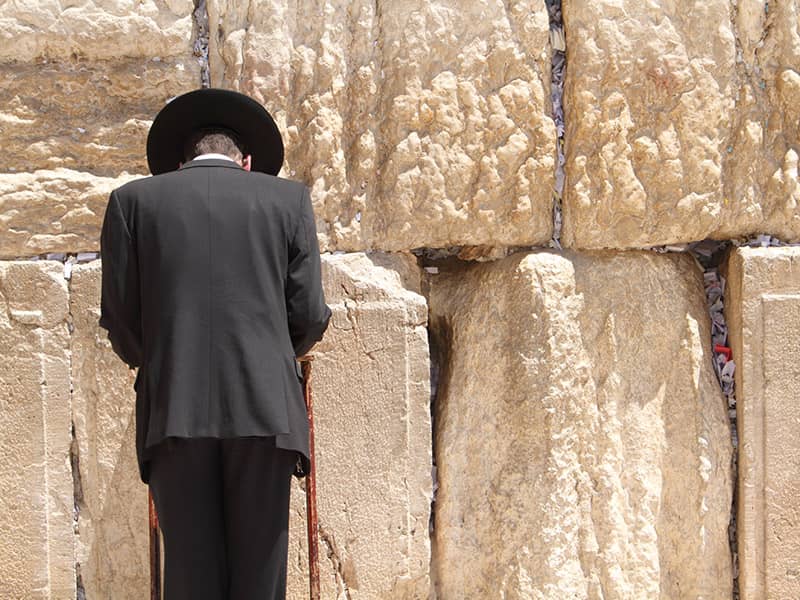Purim is about concealment. More specifically, it is about movement from the covert to the overt. There is a sustained tension between what characters are and what they seem to be that moves the plot forward. It is the careful unraveling of disguises that makes for salvation.
The major characters are all Marranos disguised in costume. They all struggle to manage a powerful public persona while hiding an inner secret that, if revealed, would seem to undo them. By the end, everyone is unmasked.
King Ahashverosh, according to tradition, was not of royal blood; he had married into Persian royalty. Vashti was the true Persian princess and, because she refuses to take off her royal robes, she is banished or killed. She is the only one who refuses to dress up -- or in this case down -- as something she is not. Ahashverosh has risen to royal power, but he is not royal material. He is a foolish, pompous lush dressed in royal robes. He is also terrified of being challenged or used - and that is exactly what happens anyway.
Esther and Mordecai are closet Jews. Each is fearful of the consequences of being found out. Mordecai warns Esther not to reveal her identity. The people perceive Esther as a lovely Persian woman who has become a Persian queen. Mordecai is a statesman who is known in the king's court. He does not flaunt his Jewish identity.
Haman is the scoundrel who, like Esther, is in the right place at the right time. Like the king, he rises to power without any merit. His secrets are his bloated ego and his hunger for royal power. Haman conceals all this from the king, including his irrational hatred of Mordecai.
The turn in the plot occurs when Mordecai is forced to choose between his inner and outer identities. Is he a Jew or a Persian noble? If he refuses to bow down to Haman, he will almost certainly lose his status among the Persian elite. If he bows, be understands that he will lose his inner Jewish self. In this moment of reckoning, Mordecai recognizes himself as a Jew and refuses to bow. The story isn't clear as to how Mordecai's secret if found out. Someone tells someone who tells Haman that this rude fellow is a Jew, and Haman begins his plot to avenge himself of Mordecai and his people.
What does all this drama between revealed and concealed selves say to us? Of course, the Book of Esther could be read as a midrash on Jewish life in the diaspora. How we play hide and seek, how we reveal and conceal ourselves as Jews, is a diaspora story.
But there is also a more personal journey described. In many ways, we are all Marranos, hiding behind our various masks and robes. What can we glean from Esther to help us manage the interplay between our inner and outer lives? Can Mordecai teach us something about the search for wholeness? Al the end of the story, all the inner truths come to light. As the story unfolds, there seems to be a redemptive quality in self-expression. When all is revealed, Esther becomes a powerful queen and Mordecai becomes the king's most trusted counselor. Even Ahashverosh seems to achieve a more royal demeanor. Each of these full identities was achieved by reconciling the inner and outer persons.
The story is also about the need to protect a life apart from the public eye. As Esther enters the king's palace, Mordecai warns her not to reveal her identity. Later he commands her to do so. It seems that there is a right and a wrong time to reveal the self. Perhaps the story is about the dynamics of identity that cannot escape a tension between expression and inhibition. We are who we are not only by our self-revelations, but by our careful nurturing of a private world.
As well, not all inner lives are equal. Haman uses disguise for singularly destructive ends and is ultimately destroyed by his inner self. Haman falls on Esther's couch, revealing more than an urge for power. Mordecai is revealed by his principles, Haman by his libido. At the perfect moment, Esther reveals herself as a Jew and saves the Jewish people. Though the war between the inner and outer worlds is over, there is no clear victory of one self over another. Instead there is a new and diverse wholeness, an integration of mask and man.
The rabbis describe the God of the Book of Esther as a hidden God, a playful God who dances in between the revealed and the hidden, patient and waiting for the right moment to burst forth. So we, too, find our journey in both inward and outward movements. Often we work behind the scenes nurturing a life apart, a sense of privacy and clarity. And when the moments come to stand for one's inner truths, for principles, or for one's people, then we must turn inside out and witness, loud and proud and sure.

